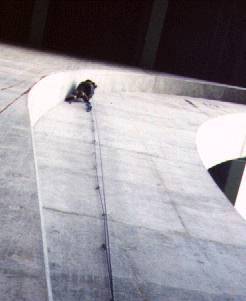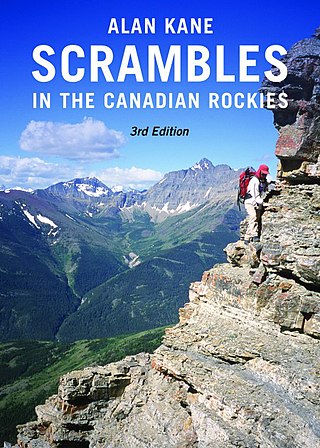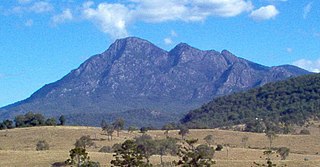
A carabiner or karabiner, often shortened to biner or to crab, colloquially known as a (climbing) clip, is a specialized type of shackle, a metal loop with a spring-loaded gate used to quickly and reversibly connect components, most notably in safety-critical systems. The word comes from the German Karabiner, short for Karabinerhaken, meaning "carbine rifle hook" used by a carbine rifleman, or carabinier, to attach his carbine to a belt or bandolier.

Trinity College is a constituent college of the University of Cambridge. Founded in 1546 by King Henry VIII, Trinity is one of the largest Cambridge colleges, with the largest financial endowment of any Oxbridge college. Trinity performs exceptionally as measured by the Tompkins Table, coming top from 2011 to 2017. Trinity was the top-performing college for the 2020–21 undergraduate exams, obtaining the highest percentage of good honours.

Urban exploration is the exploration of manmade structures, usually abandoned ruins or hidden components of the manmade environment. Photography and historical interest/documentation are heavily featured in the hobby, sometimes involving trespassing onto private property. Urban exploration is also called draining, urban spelunking, urban rock climbing, urban caving, building hacking, or mousing.

Buildering describes the act of climbing on the outside of buildings and other artificial structures. The word "buildering", sometimes misspelled bildering, combines the word building with the climbing term bouldering. If done without ropes or protection far off the ground, buildering is extremely dangerous. It is often practiced outside legal bounds, and is thus practiced mostly at night.

Mr. William Shakespeare's Comedies, Histories, & Tragedies is a collection of plays by William Shakespeare, commonly referred to by modern scholars as the First Folio, published in 1623, about seven years after Shakespeare's death. It is considered one of the most influential books ever published.

Climbing guidebooks are used by mountaineers, alpinists, ice climbers, and rock climbers to locate, grade, and navigate climbing routes on mountains, climbing crags, or bouldering areas. Modern route guidebooks include detailed information on each climbing route, including topo diagrams, route beta, protection requirements, and the ethics and style that are in place for a given climbing area.

Geoffrey Winthrop Young was a British climber, poet and educator, and author of several notable books on mountaineering.

Roof and tunnel hacking is the unauthorized exploration of roof and utility tunnel spaces. The term carries a strong collegiate connotation, stemming from its use at MIT and at the U.S. Naval Academy, where the practice has a long history. It is a form of urban exploration.

Mount Barney is a mountain within the Scenic Rim Region in south-east Queensland, Australia. It lies approximately 130 kilometres (81 mi) south-west of Brisbane, not far from the Queensland - New South Wales border, and forms part of the McPherson Range. It is a popular destination for bushwalkers and campers. Mount Barney is the sixth or seventh highest mountain in Queensland and is often regarded as one of the most impressive parts of the Scenic Rim. The mountain consists of two main peaks,, and smaller subsidiary peaks. East Peak is probably the most popular destination for bushwalkers.

The Senate House is a 1720s building of the University of Cambridge in England, used formerly for meetings of its senate and now mainly for graduation ceremonies.

A May Ball is a ball at the end of the academic year that takes place at any of the colleges of the University of Cambridge. They are elaborate and lavish formal affairs, requiring black tie or sometimes white tie, with ticket prices ranging from around £100 to as much as £640 for a pair of dining tickets at Trinity. May Ball budgets can exceed £200,000; a report by the student newspaper Varsity in 2016 found that the budget for the 2015 Trinity ball was £286,000. The balls are held in the colleges, starting around from 6-9 p.m. and lasting until well after dawn. "Survivors photographs" are taken of those who last until morning. Other colleges frequently hold winter balls, such as the popular Selwyn Snowball, who recently had acts such Tinchy Stryder and Mumford and Sons headlining.

Susan Wittig Albert, also known by the pen names Robin Paige and Carolyn Keene, is an American mystery writer from Vermilion County, Illinois, United States. Albert was an academic and the first female vice president of Southwest Texas State University before retiring to become a fulltime writer.
There are a number of popular legends associated with Cambridge University and its 800 year-old history, often recounted by punt guides to tourists while cruising the River Cam. Some are true, some contain elements of truth, and others are somewhat more fabricated. The myths and legends listed below represent a select few of the traditions and stories associated with Cambridge.
The Choir of Trinity College, Cambridge is a mixed choir whose primary function is to sing choral services in the Tudor chapel of Trinity College, Cambridge. In January 2011, Gramophone named the choir the fifth best choir in the world.
Ivo James Benedict Stourton is a British author and solicitor.
Night climbing is a term used, principally at the Oxford and Cambridge universities in England, to describe the sport of climbing up the walls of colleges and public buildings, and exploring the rooftops. This activity is frowned on by college authorities, so it is mainly done under cover of darkness, to avoid detection.

John Norman Heathcote was a British author, watercolourist and photographer, who wrote the book St Kilda, published in 1900, about the Scottish Hebridean archipelago of St Kilda.
Josephine Mary Flood, is an English-born Australian archaeologist, mountaineer, and author.

The Night Climbers of Oxford is a secret society, dedicated to nocturnally scaling college and town buildings in Oxford, England. The society is noted for its political activism, controversial acts, feats of climbing and parkour, as well as urban exploration. The society was likely inspired by their Cambridge counterparts, The Night Climbers of Cambridge. Activities conducted by the society are forbidden by the University authorities, meaning that acts are completed under the cover of darkness, to avoid detection.















